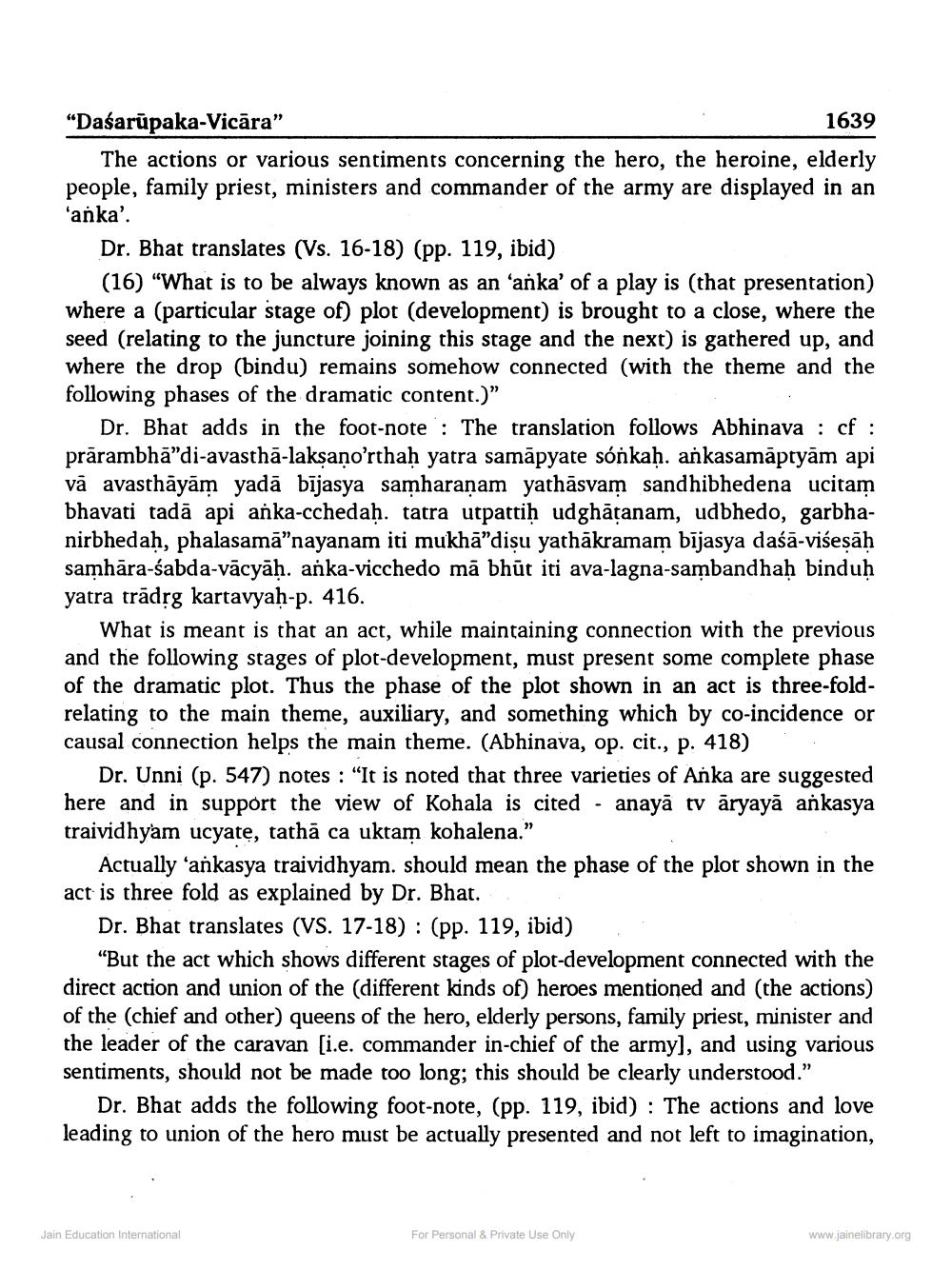________________
“Dasarūpaka-Vicāra"
1639 The actions or various sentiments concerning the hero, the heroine, elderly people, family priest, ministers and commander of the army are displayed anka'.
Dr. Bhat translates (Vs. 16-18) (pp. 119, ibid)
(16) "What is to be always known as an 'anka' of a play is (that presentation) where a (particular stage of) plot (development) is brought to a close, where the seed (relating to the juncture joining this stage and the next) is gathered up, and where the drop (bindu) remains somehow connected (with the theme and the following phases of the dramatic content.)"
Dr. Bhat adds in the foot-note : The translation follows Abhinava : cf : prārambhā"di-avasthā-laksano'rthah yatra samāpyate sónkah. ankasamāptyām api vā avasthāyām gadā bījasya samharanam yathāsvam sandhibhedena ucitam bhavati tadā api anka-cchedah. tatra utpattiḥ udghātanam, udbhedo, garbhanirbhedah, phalasama"nayanam iti mukha"disu yathakramam bijasya daśa-višesah samhāra-sabda-vācyāh. anka-vicchedo mā bhūt iti ava-lagna-sambandhah binduh yatra trādrg kartavyah-p. 416.
What is meant is that an act, while maintaining connection with the previous and the following stages of plot-development, must present some complete phase of the dramatic plot. Thus the phase of the plot shown in an act is three-fold
elating to the main theme, auxiliary, and something which by co-incidence or causal connection helps the main theme. (Abhinava, op. cit., p. 418)
Dr. Unni (p. 547) notes: "It is noted that three varieties of Anka are suggested here and in support the view of Kohala is cited - anayā tv aryayā ankasya traividhyam ucyate, tathā ca uktam kohalena."
Actually ‘ankasya traividhyam. should mean the phase of the plot shown in the act is three fold as explained by Dr. Bhat.
Dr. Bhat translates (VS. 17-18) : (pp. 119, ibid)
"But the act which shows different stages of plot-development connected with the direct action and union of the (different kinds of) heroes mentioned and (the actions) of the (chief and other) queens of the hero, elderly persons, family priest, minister and the leader of the caravan [i.e. commander in-chief of the army], and using various sentiments, should not be made too long; this should be clearly understood."
Dr. Bhat adds the following foot-note, (pp. 119, ibid) : The actions and love leading to union of the hero must be actually presented and not left to imagination,
Jain Education International
For Personal & Private Use Only
www.jainelibrary.org




